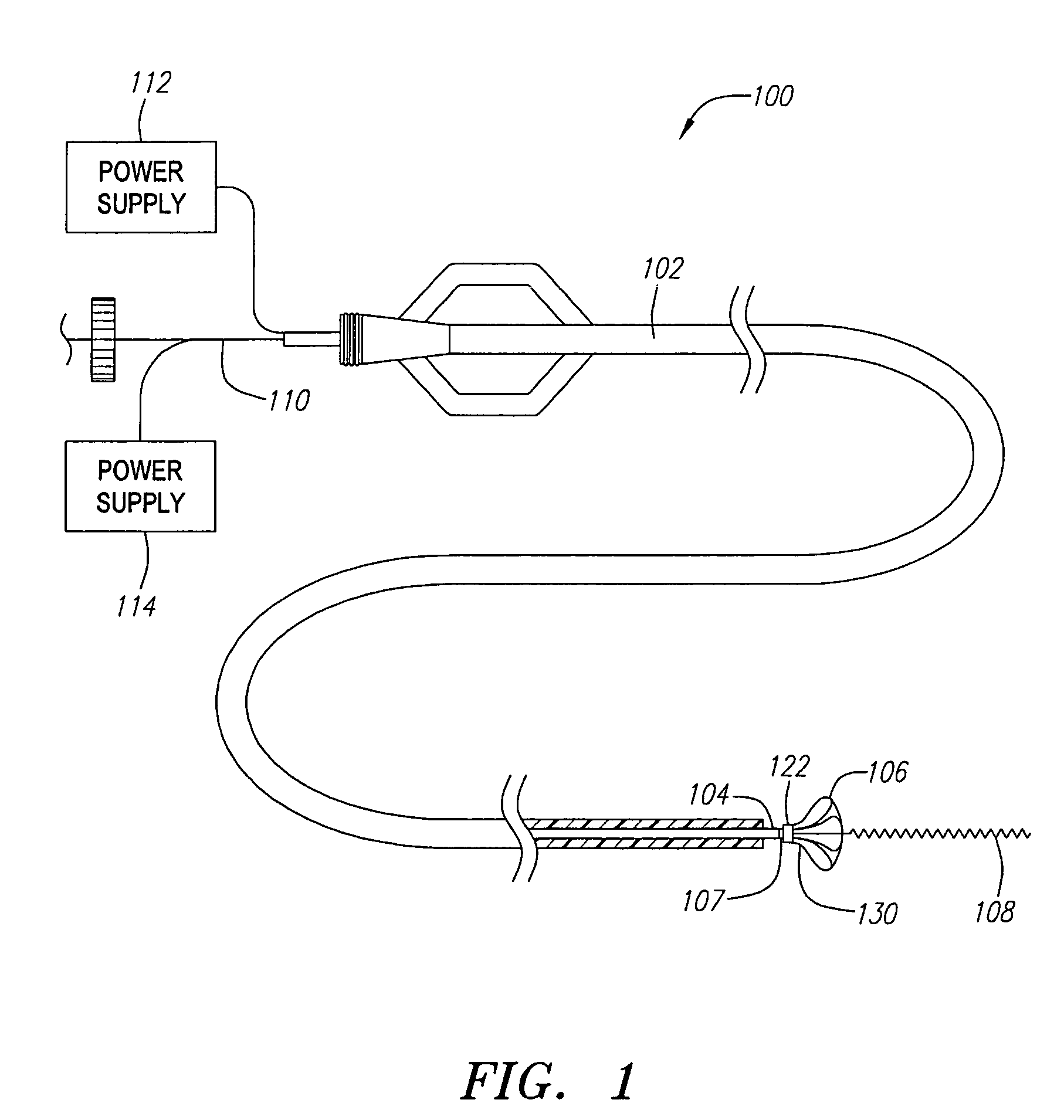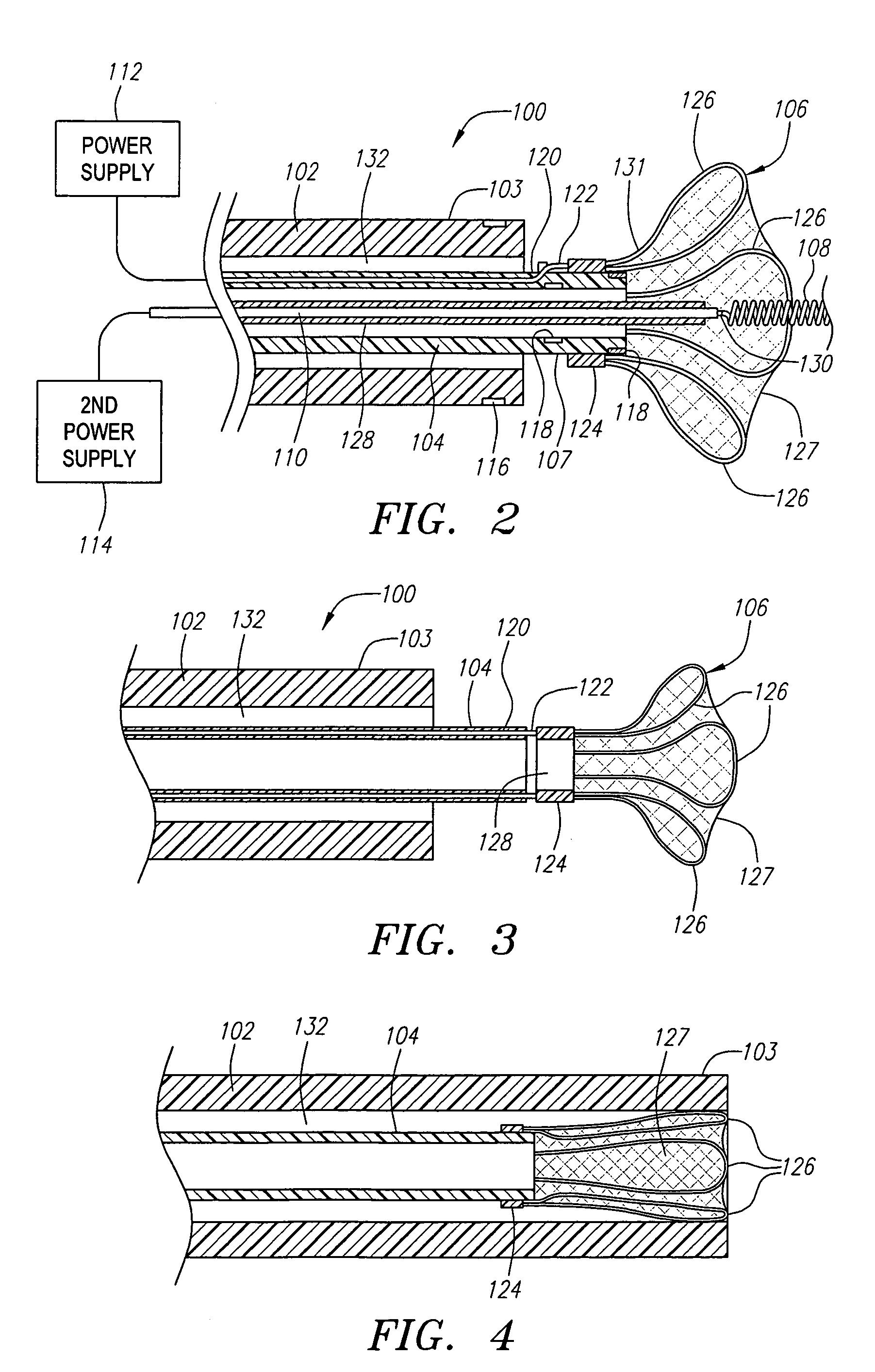Detachable aneurysm neck bridge
a neck bridge and aneurysm technology, applied in the field of systems, apparatus and methods for bridging the neck of aneurysms, can solve the problems of high risk of aneurysm occlusion, particularly acute medical risk, and the possibility of a portion of the coil moving out of the aneurysm entrance zone and into the feeding vessel
- Summary
- Abstract
- Description
- Claims
- Application Information
AI Technical Summary
Benefits of technology
Problems solved by technology
Method used
Image
Examples
Embodiment Construction
[0043]The disclosed invention relates to devices and procedures for stabilizing the position and, in some instances, the structure of vaso-occlusive devices placed in a target occlusion site, usually an aneurysm. Use of the retaining devices and neck bridges disclosed herein reduce the potential migration of vaso-occlusive devices (e.g., helically wound coils) from target occlusion sites, by forming at least a partial barrier at the entrance zone to the aneurysm, i.e., where the aneurysm meets a feeding vessel.
[0044]FIG. 1 shows an aneurysm treatment system 100, which includes an aneurysm neck bridge 106 constructed in accordance with a preferred embodiment. The aneurysm treatment system 100 also includes a tubular delivery catheter 102, and an inner elongated tubular member 104 slidable within the tubular delivery catheter 102. The aneurysm neck bridge 106 is removably coupled to a distal end 107 of the elongated tubular member 104 via an electrolytically severable joint 122, and i...
PUM
 Login to View More
Login to View More Abstract
Description
Claims
Application Information
 Login to View More
Login to View More - R&D
- Intellectual Property
- Life Sciences
- Materials
- Tech Scout
- Unparalleled Data Quality
- Higher Quality Content
- 60% Fewer Hallucinations
Browse by: Latest US Patents, China's latest patents, Technical Efficacy Thesaurus, Application Domain, Technology Topic, Popular Technical Reports.
© 2025 PatSnap. All rights reserved.Legal|Privacy policy|Modern Slavery Act Transparency Statement|Sitemap|About US| Contact US: help@patsnap.com



